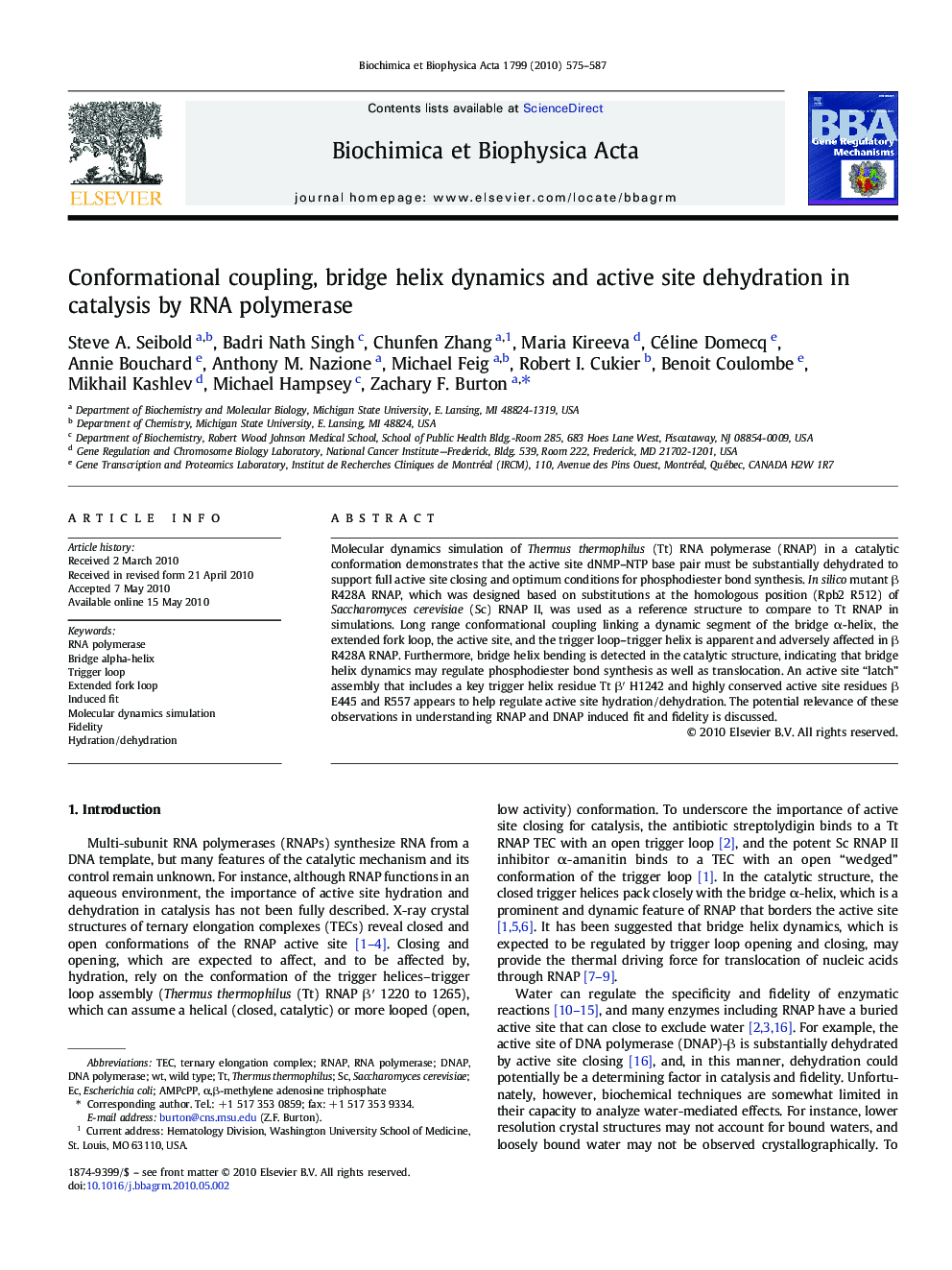| Article ID | Journal | Published Year | Pages | File Type |
|---|---|---|---|---|
| 1946820 | Biochimica et Biophysica Acta (BBA) - Gene Regulatory Mechanisms | 2010 | 13 Pages |
Molecular dynamics simulation of Thermus thermophilus (Tt) RNA polymerase (RNAP) in a catalytic conformation demonstrates that the active site dNMP–NTP base pair must be substantially dehydrated to support full active site closing and optimum conditions for phosphodiester bond synthesis. In silico mutant β R428A RNAP, which was designed based on substitutions at the homologous position (Rpb2 R512) of Saccharomyces cerevisiae (Sc) RNAP II, was used as a reference structure to compare to Tt RNAP in simulations. Long range conformational coupling linking a dynamic segment of the bridge α-helix, the extended fork loop, the active site, and the trigger loop–trigger helix is apparent and adversely affected in β R428A RNAP. Furthermore, bridge helix bending is detected in the catalytic structure, indicating that bridge helix dynamics may regulate phosphodiester bond synthesis as well as translocation. An active site “latch” assembly that includes a key trigger helix residue Tt β′ H1242 and highly conserved active site residues β E445 and R557 appears to help regulate active site hydration/dehydration. The potential relevance of these observations in understanding RNAP and DNAP induced fit and fidelity is discussed.
